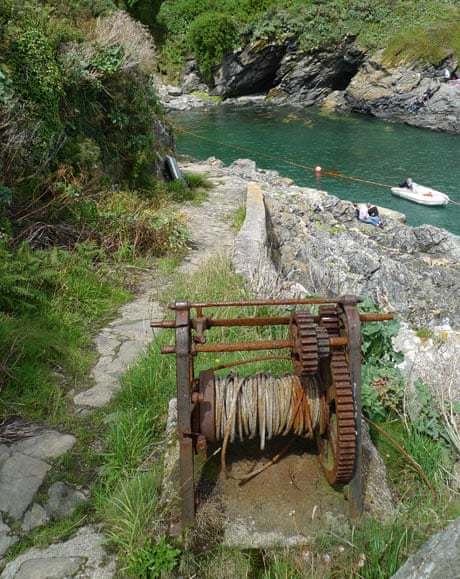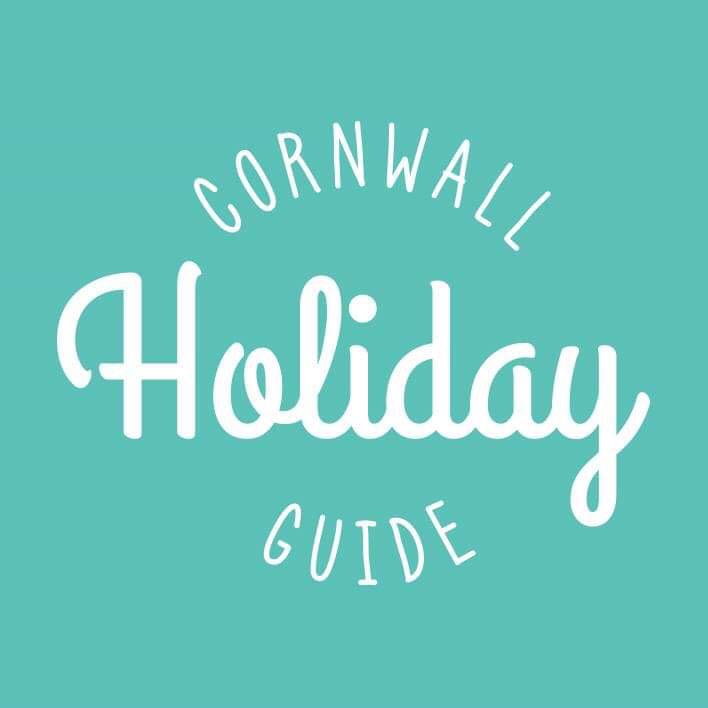Walking The Smugglers' Trail
Whilst researching smugglers and their history, we came across this great article, which we think is definitely worth another read. Hope it inspires you to get out in this beautiful and mysterious part of the country, and walk this route yourself.
Cornwall was not particularly well placed for smuggling operations, even though for centuries it was at the centre of the major Atlantic trading routes. It was considered backward, out of touch and not that close to the continent, and landing places were difficult. Unlike in the prosperous south-east, runs would be financed by individual families or by small groups.
The Carter brothers, John, Harry and Charles, ran a profitable family “firm” from around 1770 to the early 1800s. John was clearly the prime mover. His nickname was the King of Prussia (a title he apparently gave himself during childhood games) and it is indicative of his influence that the centre of operations, Portleah Cove, came to be known as King of Prussia’s Cove, or Prussia Cove or King’s Cove for short. He is said to have developed the slipways, harbours and roadways and adapted the caves in nearby Bessy’s Cove.

Harry is one of the few smugglers to leave a firsthand account of his life and activities. Many smugglers, judging from the professions given in court records, would have been illiterate. Of those who could put pen to paper, few would have been inclined to put a confession into writing. Harry Carter’s memoir, first printed in the Wesley-Methodist Magazine of October 1831, is a confession of sorts, written after he had “seen the Light” and when he was old enough to not care about the consequences. It is sometimes rather heavy going. However, sections are lucidly descriptive and give a rare insight into a man caught up in a complicated and morally ambiguous profession.
Harry taught himself to read and, more importantly for a smuggler perhaps, to keep his own accounts. Boat owners were known to keep two sets of books, one for the above-board business and one for private perusal only, which must have made accounting pretty complicated. By his mid-20s Harry was ordering his own vessel, a sloop, followed quickly by a bigger cutter, both of which did good service for him. “By this time I began to think something of myself,” he says.
The cost of getting caught would have been high. Smugglers frequently went to jail; those who had been implicated in violence could be sentenced to death or, if they were lucky, to transportation. On one occasion Harry was tipped off that things were getting too hot for him to remain in the area, as a bounty of £300 had been put on his head. It is an astonishingly high sum for the time. For the brothers to be able to run their smuggling business over such a long period without being caught, there must have been some intimidation of the local populace.
However, if the popular image of the smuggler as a lovable rogue is just a myth, the Carter brothers must have come as close to it as is humanly possible. Certainly they operated by codes of decency that were unlikely to be matched elsewhere. Harry is at pains to point out that he hated swearing and punished anyone he heard blaspheming on his boats. There’s also a story, not in Harry’s account but quite possibly accurate, that John Carter and his men once broke into a revenue store to retrieve a shipment that had been snatched. John’s men argued that it was too risky, but John insisted on their retrieving the goods on the basis that he had promised them to someone and he couldn’t let them down. Returning the next day, the revenue men commented that it must have been John Carter’s doing because he had taken only his own goods and left everything else.

Kenneggy Sands and Perran Sands
David and Chris Stewart, accompanied by the dog, take a seven-and-a-half- mile walk through the haunts of one of Cornwall’s most famous smuggling families
We drive from Bristol to Cornwall in just a few hours, which reminds us that Cornwall has become close enough for city types to weekend in their cottages and get back in time for work on Monday – a far cry from the days the journey must of taken in Harry Carter’s time. We are hoping that there will be space for a small van at the campsite at Kenneggy, once the home hamlet of Charles Carter. We’re in luck: there’s just one pitch left, right up against a hedge. For the past couple of hours our terrier, Brough, has been stretched out in the footwell silently farting. So after a quick mug of tea we set off in the dark towards Kenneggy Sands, in the hope that the dog will empty before we are condemned to spending a confined and smelly night with him.
The first part of the track is wide enough, leading down to a circle of field gates. Here the path down to the sea becomes little more than an enclosed ditch, with uneven stone and a lot of mud underfoot. On either side are traditional Cornish “hedges”, enclosing the path in deep darkness. The name is most likely derived from the Angle-Saxon word “hecg” for a territorial boundary, and so is not related to the planted hedges seen elsewhere.
Cornish hedges are similar to dry-stone walls but with a wider earth core between the stone sides and a wide concave top, or “batter”. Some date from prehistoric times – it has been argued that they are some of the oldest manmade artefacts in the world still fulfilling their original purpose – while many are medieval or date from early industrial ages. With the earth core kept at a fairly constant level of dampness by water running off the batter in winter and foliage growing on the top in summer, and plenty of crevices in the stone wall sides, the Cornish hedge becomes a true mini-ecosystem. Various plants and flowers spring up through the seasons, while small animals, insects and reptiles house themselves in the stone walls.
The hedges must also have been fundamental to local smuggling operations. It’s easy to imagine such a path providing perfect cover for the troops of tubmen, and possibly even ponies, spiriting their loads away into the hinterland. With these sunken paths an integral part of the landscape, there’s little need for the specially constructed tunnels so often talked about in relation to smuggling but so seldom found.
The next morning we take the same path down to the beach, following a family with windbreaks and buckets and spades. It’s much easier to negotiate in daylight. At the coastal path the family peel off left to climb down the ladder to the sand. We bear right. Above us is a terrace of coastguards’ cottages built in 1826 in a bid to put an end to the illegal goings-on in the area – a case, one feels, of shutting the stable door after the horse has bolted. We pass the arts-and-crafts-style house of Porth-en-Alls, designed in 1911, with its unusual high-walled circular turning space.
Soon the track opens out onto a terrace overlooking Bessy’s Cove. Clambering over a gate, we walk down onto the sloping rocks, joining a fisherman casting his line. King’s Cove is on our left; it’s now a private beach for those renting the flats in the Porth-en-Alls property. On this promontory the Carters had the temerity to mount a battery of guns, used at least once to fire on a revenue cutter (which returned fire, though without loss on either side). King’s Cove is open to the sea and could only have been used for landing if conditions were absolutely right. Harry Carter reports using it as a launching spot on one of his flights into exile, heading to Roscoff in France in an open boat. It was an unlucky choice of destination, as he was promptly captured and held prisoner during France’s reign of terror.
As far as landing places were concerned, two strategies were available to smugglers. By landing on a wide open beach you would be in full view of any revenue men, but they would be in full view to you. Open beach landings were, in the mean, the preferred methods for smugglers on the east coast. The incoming boats would be beached at low tide, giving plenty of room to arrange the unloading into waiting carts ostensibly there to collect kelp. With such landings the chief issue was how to avoid having a gaggle of tubmen hanging around on the beach waiting for the boats to come in. In some places the waiting men were said to bury themselves in the sand, with only their heads sticking out. On the signal the beach would erupt with men ready to get on with the unloading. It must have been a bizarre sight.
Where open beaches were lacking or unsuitable, the alternative strategy was to sneak into a hidden cove. Bessy’s Cove, on our right, is a sheltered bay, hemmed in by rocks. From whichever angle you approach, it is completely hidden until you are right upon it. With some careful watch-keeping and a bit of judicious signalling, a ship anchored offshore could be warned off if revenue men were sniffing around.
It didn’t always go to plan, of course. Harry Carter tells of an attempted drop-off at Cawsand, further east. Seeing two boats heading out to his ship, he assumes they belong to his colleagues. Too late he realises that they are full of revenue officers. His crew panic and dart below before the ship is boarded, leaving Harry the only man prepared to put up a defence. He is overpowered and knocked down. Twice the revenue men discuss putting him down below with the others and twice they don’t bother, on the assumption that he is either dead or nearly dead. With his skull “shot to atoms”, Harry manages to clamber over the side and tries to swim ashore. Luck must be on his side, however, as by hauling his way along some ropes he finds himself in shallow water. Eventually he meets some friends, and is whisked across country to his brother Charles’s house.
In Bessy’s Cove we can see bricked-up caves, steep steps leading down to a tiny pebble beach, and a slipway running diagonally up the further side of the cove. We climb down the steps to find a few parties of swimmers, mostly in black wetsuits, and family groups making the best of rather weak sun.
Climbing back up the steps and continuing west, we find some tumbledown shacks at the top of the path leading to the slipway. The shacks themselves may not date from the Carter brothers’ time but from this vantage point we can see a thatched cottage and the property now called Cliff Cottage, which is thought to have started life as a fish cellar. Its size and proximity to the cove suggest that it owes a debt to the Carter’s smuggling operations. If, as some stories relate, John Carter did contract a tunnel from the cove, this house would seem a likely destination.
The coastal path continues to the west, skirting around Piskies Cove, a tiny natural beach without the obvious advantages of Bessy’s Cove but no doubt useful in emergencies. The footpath passes above a huge gaping cave and then on to Cudden Point, owned by the National Trust. From the sea cliffs the ground slopes gently up towards the main road between Helston and Penzance, although it would have been little more than a track in Harry Carter’s time.
In between are tiny hamlets and isolated farmsteads. Harry and his brothers would have known every home and every person in this strip of land. Just above Piskies Cove is Acton Castle, owned by the Praed family. John Carter rented the farm here, and while the owners were away, he was able to hide his brother in the house after his escape at Cawsand. Harry writes that he only dared to light a fire at night, for fear of the smoke giving away his position. He still went down to Bessy’s Cove at night for a drink of grog and some banter. In the end he into exile in New York.
Our path continues past Stackhouse Cove, and St Michael’s Mount comes into view. Perran Sands, by the village of Perranuthnoe, is dotted with bathers and surfers. We stop at the cafe for a late lunch, and again for ice cream. Then it’s time to return across the fields, following field boundaries and sunken lanes connecting the farmsteads and hamlets. It’s been a wet summer and the tracks are filled with mud. Our smugglers would used these, and we are only attempting paths that are marked as rights of way, so there must have been many more. Eventually we find our way back to Kenneggy, where the dog collapses on the front seat and we put the kettle on.
That night we tuck into fish and chips accompanied by a glass of red wine, surrounded by families in tents and caravans. We realise the sheer struggle to survive in those times – of which smuggling was a small but indicative part – is so alien to us that it is almost impossible to imagine.
Article and pictures courtesy of Nicholas Rudd-Jones and David Stewart, from a piece originally published in The Guardian in 2011







Facebook Comments